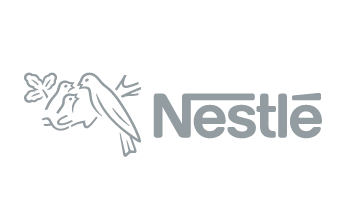Digital transformation is completely revolutionizing the way we do business and companies are constantly making changes in order to keep up with evolving technology. With these constant changes and upgrades, there is a chance that customers can get left behind and that would defeat the purpose of implementing this new approach. If a company intends to maintain a seamless flow, it must think of its digital transformation as an ongoing process and ensure that the customer is at the centre of these changes. This is how design thinking comes into play.
No Mind Left Behind
Design thinking is a five-step, human-centric process that tries to see the big picture and provide various solutions to each possible problem. Rather than taking a narrow view and addressing the immediate issue, it considers the present and the future. The concept came about in the 1960s when inventor Buckminster Fuller gathered a group of scholars from different fields to solve a problem. He believed that “Humanity on Earth teeters on the threshold of revolution. It has to be a success for all or none.” By considering the different approaches to solving this one problem, he found that a holistic and inclusive solution would be the most effective.
From this, design thinking was developed and broken down into 5 distinct steps – empathize, define, ideate, prototype, and test.
Empathize
The nature of design thinking is that it is human or user-focused and so the very first step in the process is to understand what your users, customers or stakeholders want. You have to go beyond the actual products and services that you provide them and get to understand the problems they might be facing, ways you can make life easier. Observe the way they interact with your company, get to know what they search for online, find out what drives them – this insight will help you to better empathize with them. Once you’re able to put yourself in their shoes, you can start to formulate solutions to their problems or understand how to lead them to a decision.
Define
Once you’ve identified their problem you need to properly define it and start to find solutions. For instance, a common problem with the ongoing pandemic is restricted business hours. As a retailer, your customers might be having trouble making it from work to your store in time to purchase items. Your problem statement could be, “In order to make our items more accessible despite curfew restrictions, we need to offer online shopping.” Your problem statement must focus on one key issue and provide a solution that is based on the user’s needs.
As you get to better understand your users, you’ll be able to highlight numerous problems and it can seem daunting. By taking this approach, you’re able to turn what would otherwise seem like a huge obstacle into small, manageable projects.
Ideate
Now that you have identified and defined the problems, you need to begin to ideate the most effective solutions. In this step, it is crucial to have the involvement of the members of your team, particularly those who will be responsible for the implementation and maintenance of the initiative. The ideating stage is where you go big, get creative and think outside of the box. With the inclusion of members from different areas in the company, you get to see new ways to tackle each problem based on that member’s area of focus. Your marketing department will give you a different solution than your finance team, for instance. This is what design thinking is – it allows you to see the bigger picture and consider all the possible ways to address an issue.
If you can, having a group of actual users can make an even greater impact. Remember, at this point, you just want to identify as many possible ways to solve the problem as you can. The more minds, the better!
Prototype
When producing a prototype you don’t have to go all out. This step is just to give you an idea of what the end product would look like. You can create a mock-up of a website or app, create a PowerPoint presentation that shares what the solution is. The most important aspect here is to ensure that the objective and intentions are clear. Share this with your team or a focus group and get their honest feedback because this will inform your strategy and execution.
Test

Even after you have launched your digital transformation, the learning continues. Technology is ever-changing and you need to be ready to change with it. As soon as you think you have solved a problem, another might come up. Be sure to frequently gather feedback and data from your users so you can adjust your strategy or upgrade your technology as needed. There’s no need for you to wait for something to go wrong. The best digital transformation strategies are those that try to be proactive and not reactive.
Using our previous example, rather than wait for a change in the curfew hours to launch your website, publish it and create awareness and a solid customer base. This way if there are restrictions, your site would already be seen as a solution to that problem.
The Takeaway
Digital transformation can seem overwhelming when you consider all the elements that need to be in place. What helps is having a digital partner who has the experience in not only launching but also in maintaining successful digital transformation plans for numerous large companies across the region. Our team uses design thinking to spearhead our projects so nothing is missed. It can be daunting but we’re here to help.











"Their experience and stewardship assisted us in making the right decisions for this project and many others."
Massy Stores
Vice President Marketing & Communications